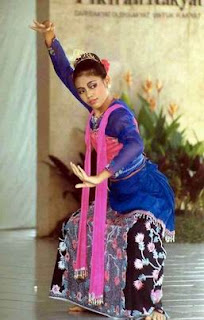 Serampang dua belas, typical dances from Sultanate Serdang, North Sumatra, was recently experienced in the technique pendangkalan.
Serampang dua belas, typical dances from Sultanate Serdang, North Sumatra, was recently experienced in the technique pendangkalan.Pendangkalan occurred because dance is gaining popularity in the 1950s, many danced by people from various regions so that there was a shift from the original techniques.
This was revealed by the traditional dancers of North Sumatra, Jose Rizal Firdaus, in his paper presented in the workshop Serampang Sauti Dua belas works in North Sumatra Cultural Park, Monday. The workshop lasted until Wednesday.
Chief Executive Workshop Kesumaningayu Sri Dewi says, the workshop aims to preserve the dance that more and more of this sink.
"We felt a little nervous arts traditions of other countries will be taken. Moreover, if not developed into a young child, "said Sri. This step is also a committee to fill the children's holiday on useful things.
Serampang dua belas own Sauti created by the era of the 1940s. Sauti a dancer born in 1903 in Bath Beach, who is now a part of Serdang Bedagai. Sauti also a teacher and be helped in the Cultural Bureau of Representatives of North Sumatra in Medan. He died in 1963.
Social dance is danced in pairs, either with the opposite sex or same type, it is now famous throughout the country, and even performed in Malaysia, Singapore, Thailand, and Hong Kong. Fame was on one side also cause anxiety because they can claimed by other nations.
According to Sri, this dance was originally danced only by men. His name is also used to extract due to the island dance songs that accompany this dance is the song "Island Sari".
When times were created, women can not go dancing because dancing is going to show their curves, and it was banned.
However, the development partners of men and women who danced. The dance tells of the introduction of young people to enter marriage in the 12 range or 12-step movement that later became a dance of serampang dua belas. (SOURCE: KOMPAS)







